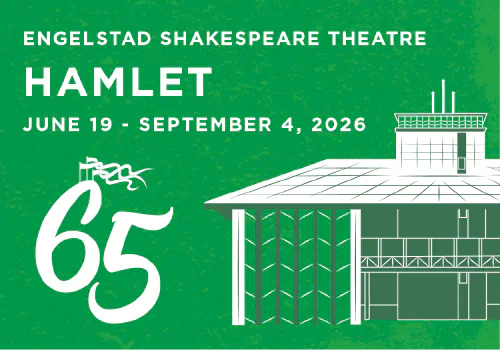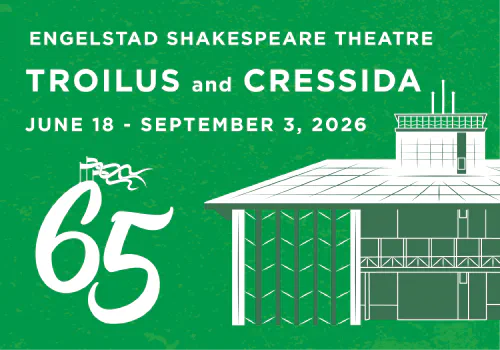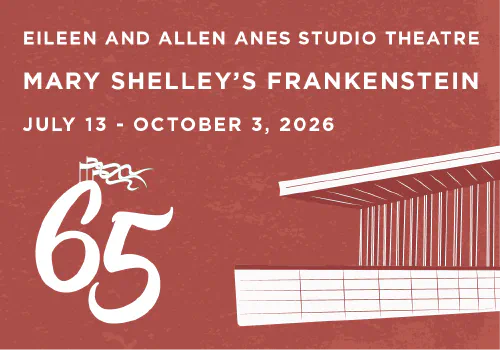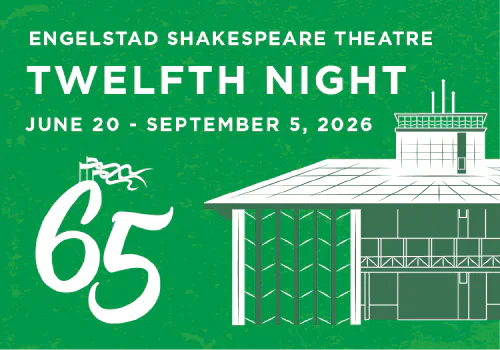"Something 'Winged' This Way Comes": Bringing Hecate to Life at the Utah Shakespeare Festival
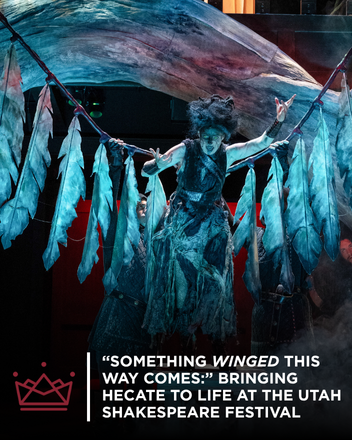
By Kathryn Neves, guest writer
Terrible and gaunt, with spectral 20-foot wings and a harrowing cry, a powerful figure rises above the stage, terrifying witches and kings alike. This is Hecate, the goddess of witchcraft, brought to life with striking power in the Utah Shakespeare Festival’s 2025 production of Macbeth. While most productions cut Hecate out entirely, this season the Festival embraces her, shedding light on this oft-forgotten piece of Shakespearean (and actually, Greek) lore.
Hecate appears only twice in Shakespeare’s script––in Act 3, Scene 5, and in Act 4, Scene 1. In her first appearance, she materializes to frighten and scold the Weird Sisters—reprimanding them for speaking with Macbeth without consulting her first. She tells the witches that they must show Macbeth visions which will give him a false sense of security—”And you all know,” she says, “security is mortals’ chiefest enemy.” In her second scene, Hecate appears to praise the witches for their work, as Macbeth is shown mysterious apparitions and visions pertaining to his future.
As interesting as Hecate is, most scholars believe that she was not actually written by Shakespeare. There was a tendency, after Shakespeare’s death, for certain writers to insert their own work into his plays. The Hecate scene is a likely example; it’s generally agreed that Thomas Middleton was responsible. And for this reason, almost every production of Macbeth erases Hecate entirely. This season, however, director John DiAntonio saw the opportunities and the raw power in this hidden gem of a character.
“If we were going to include Hecate, we needed to give her a meaningful arc,” said DiAntonio. The Festival’s production includes Hecate in three places; at the end of Act I, where she addresses the Weird Sisters directly; during the cauldron scene, where she acts as a puppetmaster of the witches and the apparitions; and finally at the end, where she appears to drag Macbeth away.
DiAntonio’s central image, the inspiration for Hecate, was the classic “Angel of Death” archetype: burnt black wings, gaunt face and body, and otherworldly movements and vocalizations. All of this adds up to her thematic importance. “Macbeth’s arc spirals into darkness,” said DiAntonio. “And Hecate is the gatekeeper of that journey.”
Choreographer Trey Plutnicki feels similarly. “Hecate’s involvement serves as a reflection of Macbeth’s actions,” he said. He and the rest of the Macbeth team worked to build a balance; crafting Hecate as a terrifying, all-powerful figure, while still allowing the character of Macbeth to have his own agency and arc. “I hope people see Hecate as a physical manifestation of fate.”
As the choreographer, Plutnicki drew inspiration from a variety of sources—from comics, to movies, to video games. “I find a lot of these characters translate well to stage choreography,” he explained. He worked with all the performers involved—from the wing puppeteers to the “minions” who lift Hecate to fly her across the stage—and created a cohesive design. “They share a vocabulary of movement that unifies them.”
For costume designer Lauren Roark, the greatest challenge was the physical scale. The Engelstad Shakespeare Theatre’s large stage created an obstacle: how do you make a character look imposing and otherworldly in such an expansive space? The answer was to create a truly massive puppet: wings spanning twenty feet in length, lightweight enough to move, to collapse, and to store.
“What’s seen onstage is the result of countless hours of backstage labor, and this project is a clear example of how essential that work is,” said Roark. Working with a team of designers and technicians, the process involved research and engineering, construction of bones and 3D-printed joints, painting and attachment, and close attention to detail. Even now, there is a team who continues to work on the wings—maintaining and troubleshooting them throughout the entire run of the show. “These wings would not have been possible without the time, talent, and dedication of everyone involved.”
The overall goal with Hecate was to create a creature who was viscerally terrifying and technically innovative. Along with the “Angel of Death” image, actor Caitlin Wise drew inspiration from many sources: “Hecate is Death Angel meets Vampire meets Queen of the Underworld meets Soul Sucker.” Collaborating with several other performers, Wise brings this harrowing figure to life several times a week; “flying” across the stage with the help of her minions, flapping her massive wings with the assistance of talented puppeteers.
Wise’s Hecate brings a sense of doom and fate that pervades the entire production. “I have a deep affinity for ‘extended characters,’ with huge emotions and supernatural power. The sky’s the limit for big choices,” said Wise. “I want audiences to experience something visceral, ever-changing, and tangible—something only live theatre can provide.”
With including Hecate, DiAntonio’s Macbeth doesn’t just resurrect a rarely-seen character; it deepens the supernatural world of the play. What might have been a theatrical oddity becomes, instead, a stunning centerpiece. The team’s bold artistic vision and technical innovation have created a character that leaves audiences amazed performance after performance. It’s an example of what live theatre does best: not just interpreting the classics, but reawakening them.
Don’t miss the chance to see this once-in-a-lifetime production. Get tickets online at bard.org, or by visiting or calling the Ticket Office at 800-PLAYTIX.


